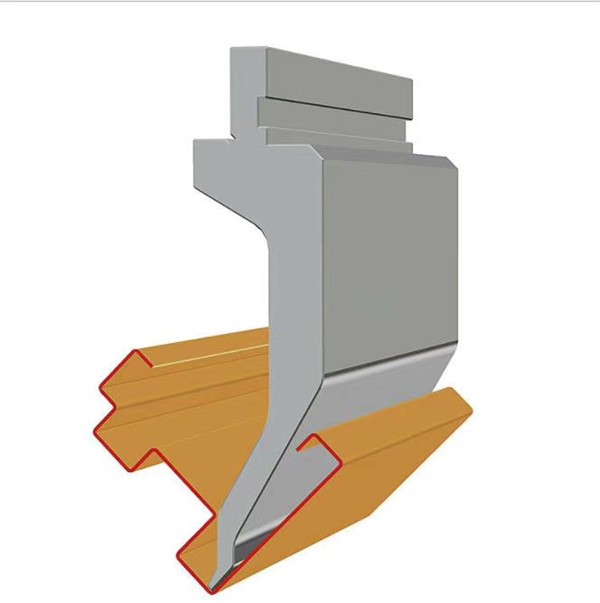Sheet metal bending is a common manufacturing process used to create a variety of components and products. The process involves deforming a sheet of metal by applying force to it, usually using a press brake or similar machine. The following is an overview of the sheet metal bending process:
1. Material selection: The first step in the sheet metal bending process is to select the appropriate material. The most common materials used for sheet metal bending include steel, aluminum and stainless steel. The thickness of the metal sheet will also be a key factor in determining the bending process. At HY Metals, we use the materials specified by the customers.
2. Tool Selection: The next step is to select the appropriate tool for the bending operation. Tool selection depends on the material, thickness and complexity of the bend.
Choosing the right bending tool is crucial to achieving precise and high-quality bends during the sheet metal bending process. Here are some key considerations when choosing a bending tool:
2.1 Material type and thickness: The material type and thickness of the plate will affect the selection of bending tools. Harder materials like stainless steel may require sturdier tools, while softer materials like aluminum may require different tooling considerations. Thicker materials may require sturdier tools to withstand the bending forces.
2.2 Bend Angle and Radius: The required bend angle and radius will determine the type of tool required. Different die and punch combinations are used to achieve specific bend angles and radii. For tight bends, narrower punches and dies may be needed, while larger radii require different tool settings.
2.3 Tool Compatibility: Make sure the bending tool you choose is compatible with the press brake or bending machine being used. Tools should be the right size and type for the specific machine to ensure proper operation and safety.
2.4 Tooling materials: Consider the materials of bending tooling. Hardened and ground tools are often used for precision bending and to withstand the forces involved in the process. Tool materials may include tool steel, carbide, or other hardened alloys.
2.5 Special Requirements: If the part being bent has special features, such as flanges, curls, or offsets, special tooling may be required to accurately achieve these features.
2.6 Mold maintenance and lifespan: Consider the maintenance requirements and lifespan of the bending mold. Quality tools are likely to last longer and be replaced less frequently, reducing downtime and costs.
2.7 Custom Tools: For unique or complex bending requirements, custom tooling may be required. Custom tools can be designed and manufactured to meet specific bending needs.
When selecting a bending tool, it is important to consult with an experienced tool supplier or manufacturer to ensure that the tool selected is suitable for the specific bending application and machine. Additionally, considering factors such as tooling cost, lead time, and supplier support can help make an informed decision.
3. Setup: Once the material and mold are selected, the setup of the press brake is crucial. This includes adjusting the backgauge, clamping the sheet metal in place, and setting the correct parameters on the press brake, such as bend angle and bend length.
4. Bending process: Once the setup is complete, the bending process can begin. The press brake applies force to the metal sheet, causing it to deform and bend to the desired angle. The operator must carefully monitor the process to ensure the correct bending angle and prevent any defects or material damage.
5. Quality control: After the bending process is completed, check the accuracy and quality of the bent metal plate. This may involve using measuring tools to verify bend angles and dimensions, as well as visually inspecting for any flaws or imperfections.
6. Post-bending operations: Depending on the specific requirements of the part, additional operations such as trimming, punching, or welding may be performed after the bending process.
Overall, sheet metal bending is a fundamental process in metal fabrication and is used to create a variety of products, from simple brackets to complex housings and structural components. The process requires careful attention to material selection, tooling, setup, and quality control to ensure accurate and high-quality bends.
Post time: Jul-16-2024



